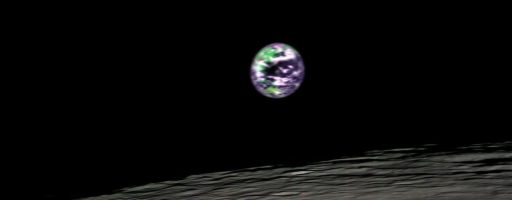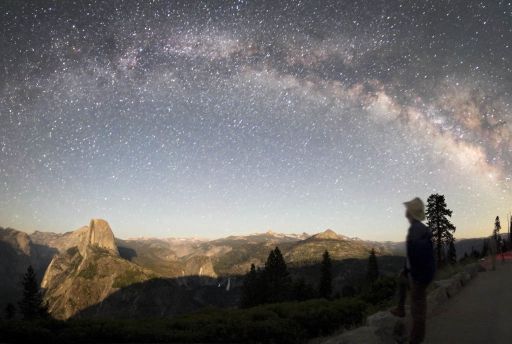Emily Lakdawalla • Aug 03, 2009
The Earth from the Sky, and the Sky from the Earth
Here's an unusual view of our home planet:

NASA / JPL / Brown
Earth and the Moon from Chandrayaan-1
Chandrayaan-1 captured this view of Earth from the Moon on July 22, 2009. The image is not from the orbiter's camera; it was captured by the Moon Mineralogy Mapper (M3), a spectrometer contributed to the Indian mission by NASA. M3 is designed to map lunar minerals in infrared wavelengths, which are longer than the human eye can see, so the photo is "false color." Australia is visible in the lower center of the image. Oceans appear as dark blue, clouds are white, and vegetation an enhanced green.And, of course, it's always cool to look back on Earth through the eyes that we use to study other worlds. I've added the photo to my "Earth as seen from planetary spacecraft" page.
And now to look up at the sky from below, I am pleased to post a link to an epilogue to last year's marvelous "Stars Above, Earth Below" travel blogs by Tyler Nordgren, in which he invites you along to "Come See the Milky Way from Glacier Point."

Tyler Nordgren
The Milky Way over Glacier Point, Yosemite National Park
The Milky Way from Glacier Point in Yosemite National Park. Moonlight still illuminates Half Dome and the high Sierras beyond. While the colors of the Milky Way are only visible in long exposure photographs, most of the detail is visible to the naked eye if you take the time to look.The Time is Now.
As a Planetary Defender, you’re part of our mission to decrease the risk of Earth being hit by an asteroid or comet.
Donate Today

 Explore Worlds
Explore Worlds Find Life
Find Life Defend Earth
Defend Earth

